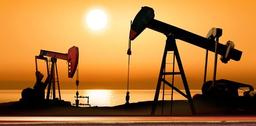
Age of Oil, Texas and the Great Depression and WWII
Quiz by Shatara Lister
Grade 7
Social Studies K-HS (Archived)
Texas Essential Knowledge and Skills (TEKS)
Feel free to use or edit a copy
includes Teacher and Student dashboards
Measure skillsfrom any curriculum
Measure skills
from any curriculum
Tag the questions with any skills you have. Your dashboard will track each student's mastery of each skill.
With a free account, teachers can
- edit the questions
- save a copy for later
- start a class game
- automatically assign follow-up activities based on students’ scores
- assign as homework
- share a link with colleagues
- print as a bubble sheet
27 questions
Show answers
- Q1Which of the following is an economic impact of the Galveston Hurricane?Cotton farmers were forced to move to the coastal plainsOil prices decreased due to the hurricaneMajor industries (businesses) moved inland (away from the coast)Thousands of people died in the storm30s
- Q2How did the Great Depression impact the oil, gas, and agricultural industries?Production declined and the economy increasedProduction and prices increasedPrices declined and the economy slowedEmployment rates increased30s
- Q3Which cause of the Great Depression damaged the agricultural sector of Texas?The effects of the New DealUnemployment busting the cotton industryRationing of wheat to feed the soldiersDust Bowl- severe drought45s
- Q4The purpose of the 1903 Galveston construction project was to-to create a cheaper railroad systemto move all businesses inlandprotect the island from flooding by hurricanesto connect the island to Houston45s
- Q5How did the Dust Bowl socially affect people in Texas?Women started working in factories to help support the familySome Texas farmers moved west to CaliforniaMinorities were treated fairly and receive equal payChildren quit school and started to work45s
- Q6What did the state government do to address the growth of the oil industry?the Texas Surveyor's Office was established to locate oil depositsthe Texas Energy Conservation Office was established to regulate oil usagethe Texas Commission on Environmental Quality was established to regulate oil pollutiontheTexas Railroad Commission was established to regulate and control oil prices45s
- Q7How did the New Deal programs economically change Texas?government funding was provided to oil companiesit provided jobs to thousandsit rationed out gas to support the troopscotton prices were regulated to assist the farmers45s
- Q8The arrival in Texas of military facilities, naval and aircraft production, ammunition plants, and petroleum plants was the direct result of-the Dust BowlThe New DealWorld War II (international conflict)The Great Depression45s
- Q9Which conclusion best supports the maps?Dust storms were most severe west of the Dust BowlDust storms caused the Dust BowlDust storms affected a large part of Texasthe Dust Bowl extended from Texas to North Dakota45s
- Q10Based on the map which of the following is true?states outside of the Dust Bowl were affectedtemperatures within the Dust Bowl declinedmuch of the land in and around the Dust Bowl is a desertstates along the Pacific received storm damage45s
- Q11How did the physical landscape of rural Texas change after the oil discovery?railroads came to Texaspipelines were built all over the stateranchers fenced in their landboomtowns sprang up all over the state45s
- Q12During the 1930s, how did supply and demand affect the economy of Texas?supply of products decreased, causing higher pricesunderproduction led to price increasesOverproduction led to prices decreasesincreased demand for products led to a loss of jobs45s
- Q13Which of the following is a characteristic of Texas during the Age of Oil?the increase of dust stormsThe growth of urban areasthe growth of cattle drivesthe decline of job opportunities45s
- Q14How did WWI socially change Texas?women gained equal paymany women entered the workforcewomen begin serving in the militarywomen went to college45s
- Q15The expansion of the railroad system throughout Texas resulted in the growth of -women began to work in factoriesoverproduction of the oil industryurban centers such as Dallas and Houstoncoal mining in Texas to supple the railroad45s